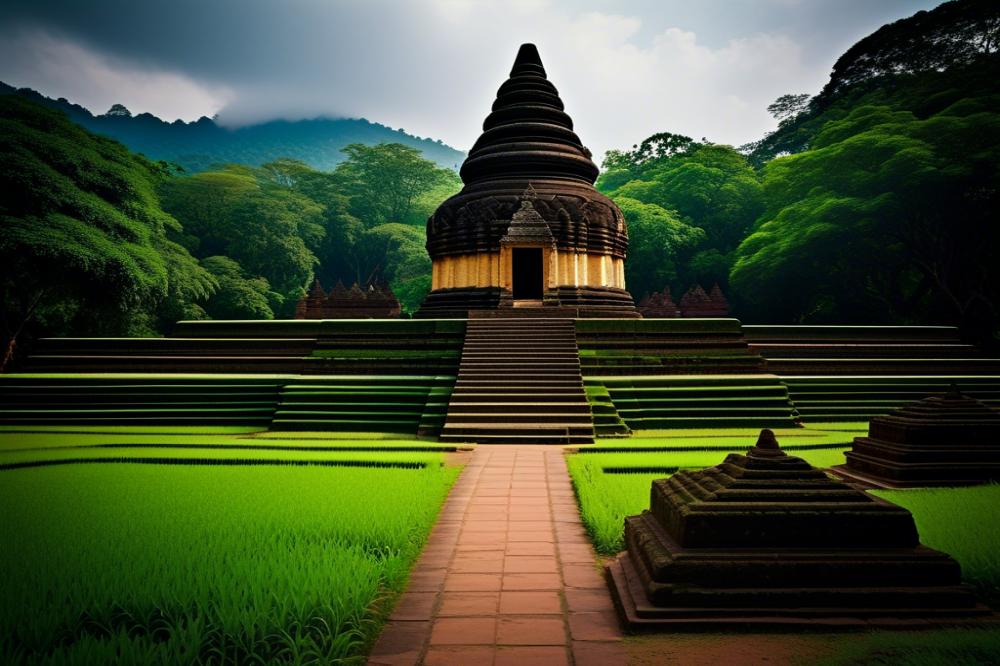Exploring the ruins of Wat Umong in Chiang Mai
Wat Umong, nestled in the lush greenery of the northern region of Thailand, stands as a testament to the rich history and spiritual depth of the country. This ancient temple complex holds great significance as a cultural heritage site, showing the architecture and Buddhist practices that have flourished over centuries. Visitors often find themselves drawn here, not only for the serene atmosphere but also for the deep sense of peace that the ruins convey. Wandering through these remnants of the past allows one to connect with Thailand’s spiritual roots.
adventure holidays in Chiang Mai attract travelers from all corners of the globe. Seeking excitement, outdoor enthusiasts flock to this area for mountain trekking, jungle excursions, and more. Yet, a visit to Wat Umong offers an entirely different kind of adventure. Exploring the ancient ruins within a tranquil forest setting creates a unique experience that combines history with a peaceful retreat. While thrilling activities can create lasting memories, a quiet moment among the temples and nature can be equally profound.
The allure of exploring this ancient site lies in its duality. On one hand, visitors can appreciate the stunning architecture of the temple. On the other, they can engage in meditation, delving deeper into their own thoughts and reflections. Wandering through the crumbling walls and peaceful pathways, the weight of history merges seamlessly with the serenity of the environment, inviting all who come to ponder life’s greater questions. For those looking to enhance their journey, Wat Umong serves as not only a historical landmark but also a sacred space for self-discovery.
Wat Umong: An Ancient Buddhist Temple
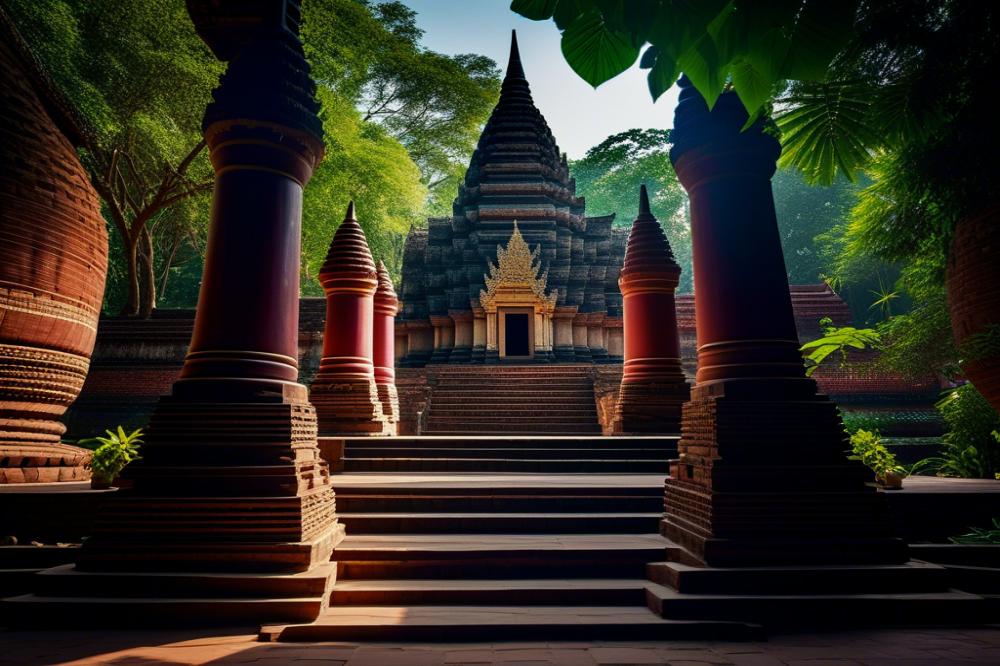
Located just outside Chiang Mai, this ancient temple is a remarkable piece of Thailand’s cultural heritage. The historical significance of the site draws visitors interested in both spirituality and architecture. Constructed in the 13th century, it carries with it stories of monks and meditation. King Mangrai, the founder, created it as a sanctuary where monks could seek peace and wisdom.
The design of the temple stands out due to its distinctive architecture. One can see the influence of Lanna style in the layout and structure. Intriguing tunnels are woven into the forest, showcasing craftsmanship that has withstood the test of time. These tunnels, built for meditation purposes, allow for a quiet space where one can connect with nature and practice mindfulness.
This site holds a special place in the history of Buddhism, particularly in Northern Thailand. Many visitors find themselves drawn to the serene atmosphere that envelops the ruins. Nature has taken back parts of the site, creating a harmonious blend of stone and greenery. Every corner of the temple whispers tales of devotion and enlightenment.
The peaceful environment invites travelers to reflect on their own lives. Walking through the ancient pathways, you might imagine the monks who once walked them in search of enlightenment. Discovering the ruins offers not just a glimpse into the past but also an invitation to contemplate one’s inner journey.
In the heart of the forest, the temple serves as a reminder of the enduring spirit of Buddhism. It paves the way for understanding history while providing an escape from the bustling modern world. This blend of ancient and natural beauty makes the temple an essential stop for anyone exploring Chiang Mai.
The Ruins and Their Mystique
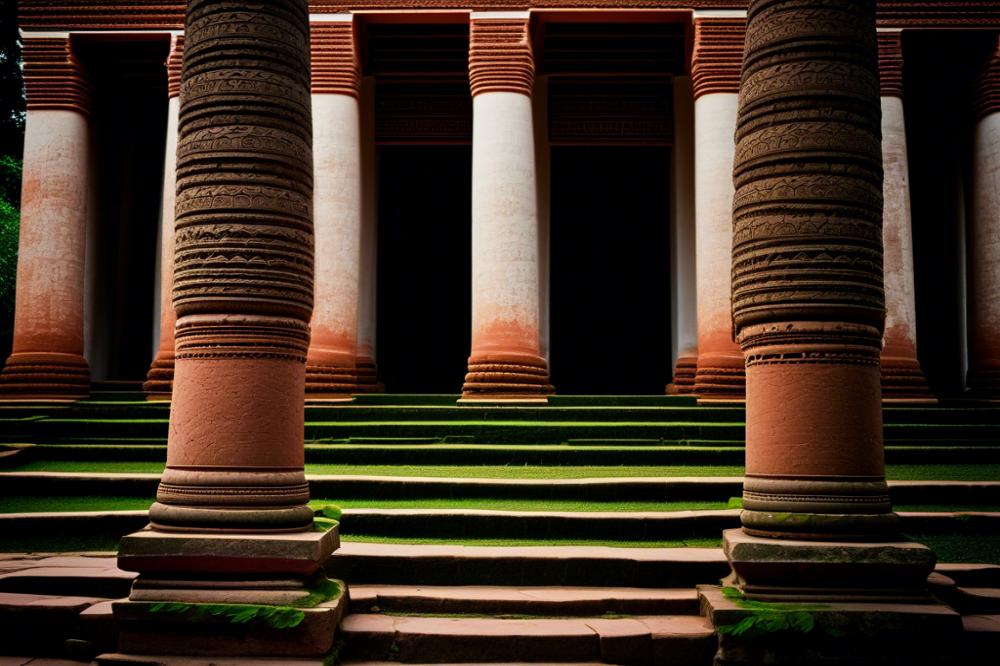
Hidden within the lush forest of Chiang Mai are the fascinating ruins of an ancient temple. These remnants tell a story of history and spirituality that dates back centuries. Visitors find themselves captivated by the architecture that closely resembles the essence of Buddhist practices. Each step through the site invites a deeper understanding of its purpose and significance.
Among the most striking features are the ancient stupas that dot the landscape. Constructed with precision and reverence, these structures showcase the artistic skills of a bygone era. Their weathered stone surfaces whisper tales of devotion and meditation. Walking around the stupas, one can feel a unique sense of peace enveloping the surroundings.
Exploring the tunnels reveals a different layer of this historical site. These dark passageways were once used for quiet reflection and spiritual journeys. They provide a sense of mystery, as the cool air and dim lighting create an atmosphere perfect for contemplation. Every curve and corner contributes to the overall ambiance of meditation. As you meander through the maze, thoughts often return to the purpose of those who walked here before.
The ruins hold significant cultural heritage for Thailand. They serve as a reminder of the country’s rich past and its enduring Buddhist traditions. Each stone and tunnel represents a commitment to seeking wisdom and inner peace. Engaging with these remnants allows visitors to connect with a spiritual journey that transcends time.
In visiting this site, one is not merely observing ancient architecture. It’s about experiencing the history that breathes life into the present. This journey into the past provides valuable insights into the meditation practices of the monks who once inhabited the area. The forests surrounding the ruins enhance their mystique, making the experience all the more profound.
Nature and Tranquility: The Forest Surroundings
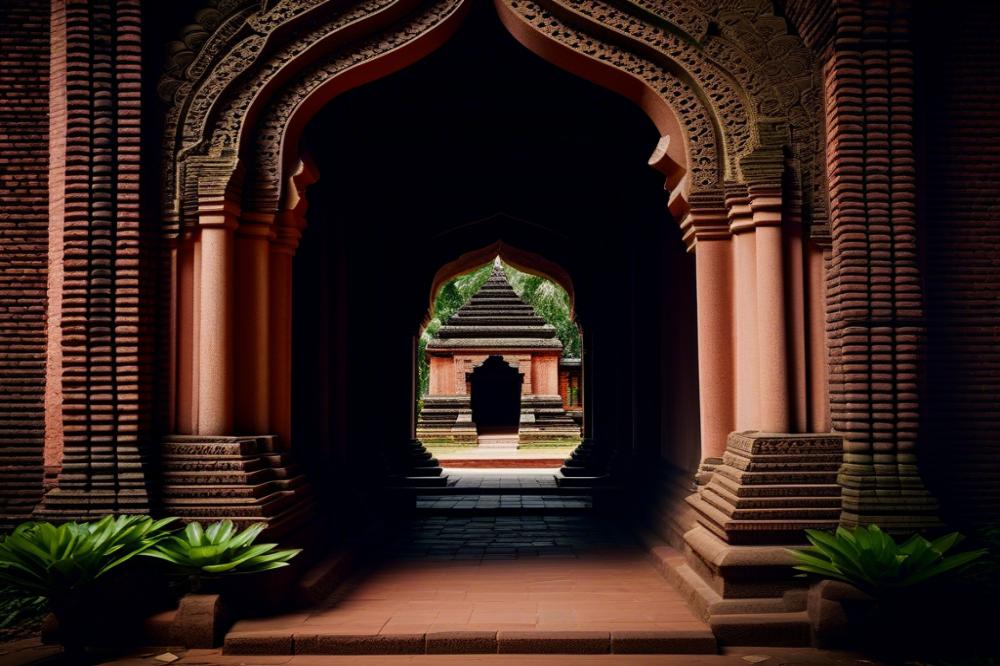
The forest surrounding the ruins of Wat Umong offers a perfect contrast to the ancient temple’s architecture. Tall trees provide shade, while soft winds carry the sound of rustling leaves. This natural setting creates a peaceful atmosphere that invites visitors to relax and reflect. Many aspects of Buddhism emphasize the importance of nature. It is often seen as essential for meditation and spiritual development.
Exploring the serene environment enhances the experience for anyone looking for solace. Each step through the forest can spark a connection with the rich history of Thailand. Amid the lush greenery, one can find spots ideal for quiet reflection. Some may choose to meditate among the trees, surrounded by chirping birds and gentle breezes. This experience can deepen one’s understanding of Buddhist practices.
Buddhism teaches that nature is a pathway to inner peace. The sights and sounds of the forest allow for an escape from the hustle of daily life. Visitors often feel rejuvenated after spending time in such a tranquil setting. This combination of ruins and forests serves as a reminder of cultural heritage. The atmosphere becomes a canvas for mindfulness, allowing individuals to focus inward.
Walking paths meander through the trees, inviting exploration. Each turn reveals aspects of the unique landscape. As one moves deeper into the wilderness, serenity envelops the senses. Buddhism often connects practitioners with their environment. This connection emphasizes a harmonious relationship between humanity and nature.
Finding a quiet spot to sit and contemplate is easy here. The ancient trees stand as guardians, providing a sense of safety. Stepping into this space can feel like stepping into another time. Moments spent in the forest can become transformative. Nature’s quiet presence nurtures the spirit, fostering a sense of balance.
In essence, the forest setting of Wat Umong enriches the experience for all who venture here. It serves not only as a backdrop but as a vital component in exploring mindfulness. The ancient temples, paired with the natural surroundings, create a holistic environment for reflection and meditation. A visit to this serene space can reveal much about both oneself and the practices of Buddhism.
Cultural Heritage and Historical Significance
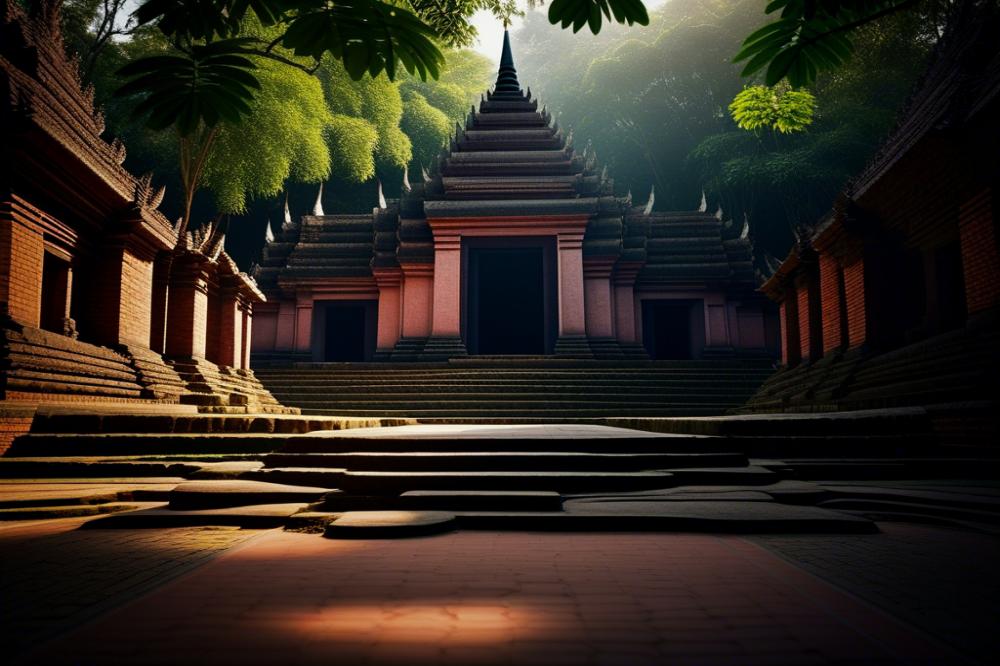
The ruins of an ancient temple stand as a testament to the rich history of Thailand. This site reflects the deep roots of Buddhist culture in the region. Hundreds of years ago, monks sought tranquility and wisdom within this forest. Meditation was an essential practice for them, and this sacred place offered the ideal setting.
P preserving these ruins is crucial for future generations. They serve as a window into the past, allowing people to connect with their history. The architecture speaks volumes about the artistry and beliefs of earlier cultures. It is not just a pile of stones; these structures symbolize faith and the dedication of those who built them.
Local tourism benefits greatly from the allure of this temple. Visitors flock to experience its peaceful atmosphere. They gain insights into Buddhist practices and beliefs. This understanding fosters respect for cultural diversity and heritage. Increased foot traffic to the site also helps the surrounding community economically.
Maintaining such historical treasures protects their significance. People often do not realize how important these ruins are to their identity. They are more than just remnants of the past; they are active pieces of Thai culture. By embracing the historical elements of the temple, all visitors can appreciate the profound legacy left behind.
When travelers explore these ruins, they engage with a living history. Each corner of the temple tells a story. Local guides share tales of monks, meditation, and daily life in ancient times. This narrative enriches cultural understanding and promotes a respectful connection with the past.
Practical Information for Adventurers
Planning your visit to the intriguing ruins requires some thoughtful preparation. Wat Umong, a serene spot nestled within a lush forest, is truly a treasure of ancient architecture and history. First, consider your travel options. Chiang Mai is easily accessible by air, bus, or train, making it a convenient base for your adventure.
Using local transportation like tuk-tuks or songthaews can be a fun way to reach the site. These colorful vehicles offer a glimpse into everyday life in Thailand while taking you closer to your destination. For those who prefer walking, the temple is not too far from the city center and provides a pleasant stroll through vibrant neighborhoods.
Accessibility is good, but be aware of uneven surfaces. The ruins and pathways can be rocky, so wearing comfortable shoes is essential. This site encourages visitors to engage in meditation. Finding a peaceful spot among the trees can enhance your experience, letting you soak in the site’s tranquil atmosphere.
Nearby Attractions
Chiang Mai is packed with rich cultural heritage sites. After exploring Wat Umong, consider visiting the famous Doi Suthep temple, which oversees the city from its mountain perch. This sacred Buddhist site connects visitors with both spirituality and breathtaking views of the landscape.
Another nearby adventure is a trip to the Elephant Nature Park. Interacting with these majestic creatures offers a meaningful way to understand and support their conservation. It’s an unforgettable experience, and you’ll leave knowing you made a positive impact.
For an adventurous day, the local night markets promise a wonderful selection of food and crafts. Strolling through stalls gives insight into the region’s traditions and flavors. Try some street food, as it reflects the heart and soul of Chiang Mai’s culinary scene.
Lastly, don’t miss the opportunity to explore the Old City. Its narrow streets and old temples tell tales of the city’s past. Every corner reveals something new, whether it’s art, coffee, or handcrafted souvenirs. Embrace the vibrant culture, and ensure you enjoy your time in this historic haven.
Reflections on Wat Umong’s Historical and Spiritual Importance
Visiting the ruins of this ancient temple offers a glimpse into a remarkable past. The site stands as a testament to the rich history of Chiang Mai and the spiritual traditions that have flourished here over centuries. Many travelers find that exploring this hallowed ground deepens their understanding of Thai culture and its profound connection to spirituality.
The peaceful environment invites contemplation and reflection, making it an ideal destination for anyone seeking tranquility. Wandering through the overgrown pathways, one can almost feel the whispers of history echoing through the trees. Each bend reveals another aspect of a once-thriving religious community, underscoring the significance of this place in the region’s heritage.
The experience of exploring Wat Umong is more than just a day of adventure; it becomes a journey of self-discovery. Encountering such a historic site, filled with serene beauty, leaves a lasting impression. Visitors often report a sense of peace that enriches their travels.
Choosing to include this ancient site in a Thai adventure holiday is a wise decision. It provides a balance of exploration and introspection. Make the most of your journey by immersing yourself in the story of this unique location. By doing so, you contribute to a deeper appreciation of Thailand’s rich tapestry of history and spirituality. Embrace the opportunity to connect with the past in a setting that has much to share.

